Introduction to E-commerce
E-commerce refers to the buying and selling of goods or services through the internet, allowing businesses to operate without a physical storefront. It has revolutionized how people shop, offering speed, convenience, and access to global markets. Through online shopping, customers can browse a product catalog, make electronic transactions, and receive products at their doorstep, all from a virtual store. The growth of smartphones and secure online payment systems has made e-commerce more accessible than ever. From large corporations to small startups, businesses are using this model to reach new audiences and boost revenue. As digital technology evolves, e-commerce continues to reshape consumer habits and business strategies worldwide.
History and Evolution of E-commerce

The journey of e-commerce began in the early 1990s with the advent of the World Wide Web. Early platforms like Amazon and eBay paved the way for internet retail, allowing consumers to purchase products from the comfort of their homes. Over the years, advancements in technology and changes in consumer behavior have led to the rise of mobile commerce, enabling shopping through smartphones and tablets. Today, e-commerce encompasses various models, including B2B, B2C, C2C, and C2B, each catering to different market needs.
How E-commerce Works
At its core, e-commerce involves several key components. First, businesses set up a digital storefront, often using platforms like Shopify or WooCommerce, to showcase their products. Customers browse the product catalog, add items to their shopping cart, and proceed to checkout. Here, they select a payment gateway to complete the transaction. Once payment is confirmed, the order is processed, and online order fulfillment begins. This process may involve shipping services, inventory management, and customer support to ensure a seamless shopping experience.
Types of E-commerce Models
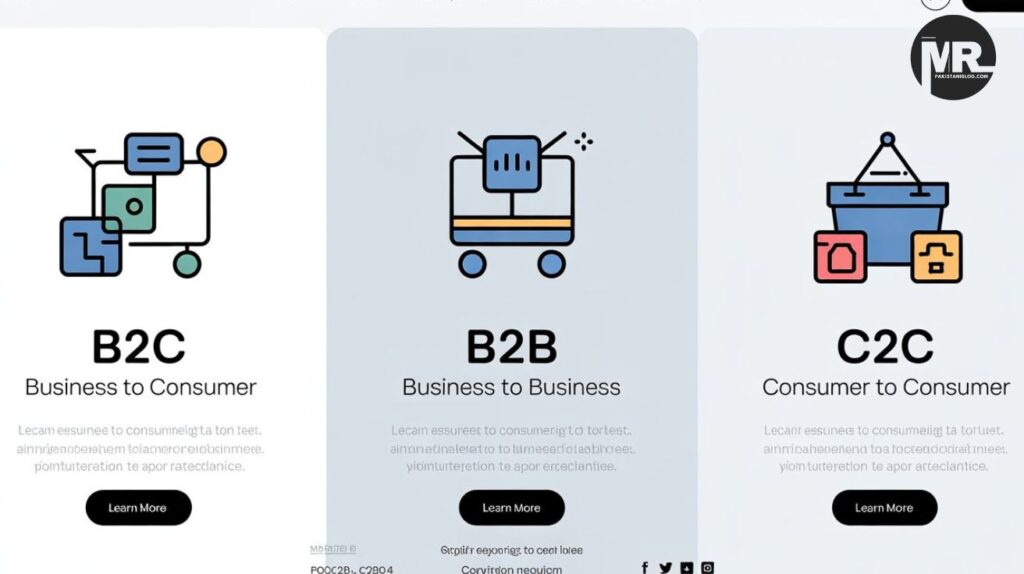
There are four primary e-commerce models:
- B2B (Business-to-Business): Transactions between businesses, such as manufacturers selling to wholesalers.
- B2C (Business-to-Consumer): Businesses selling directly to consumers, like online retailers.
- C2C (Consumer-to-Consumer): Individuals selling to other individuals, often through online marketplaces.
- C2B (Consumer-to-Business): Individuals offering products or services to businesses, like freelance platforms.
Each model operates differently, catering to specific market dynamics and customer needs.
E-commerce Revenue Models
E-commerce businesses generate revenue through various models:
- Direct Sales: Selling products directly to consumers through an online store.
- Subscription Model: Offering products or services on a recurring basis, such as monthly deliveries.
- Dropshipping: Selling products without holding inventory; suppliers ship directly to customers.
- Affiliate Marketing: Earning commissions by promoting other companies’ products.
Understanding these models helps businesses choose the most suitable approach for their goals.
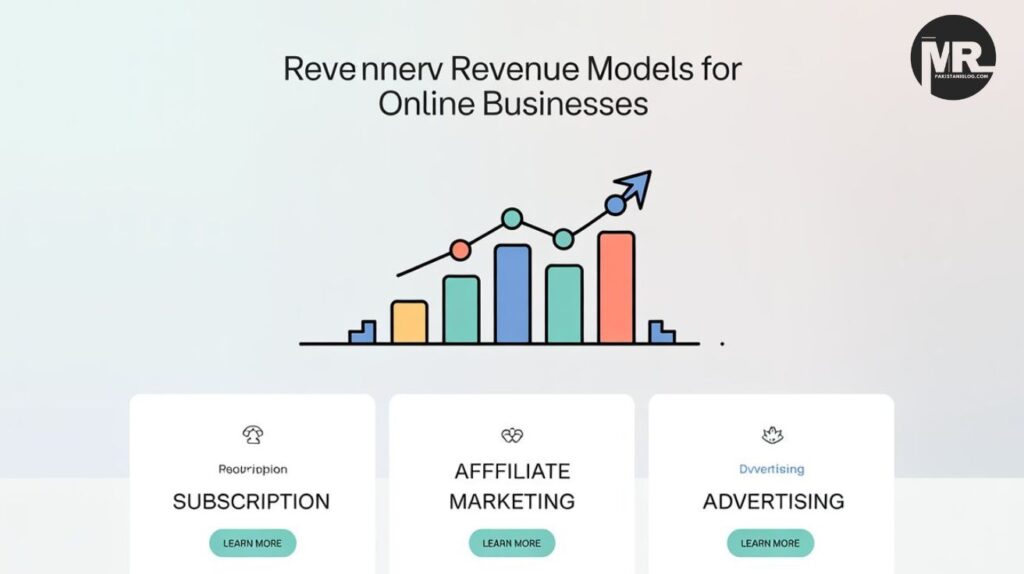
Key Components and Technologies in E-commerce
Successful e-commerce operations rely on several technologies:
- E-commerce Platforms: Tools like Shopify and WooCommerce facilitate online store creation and management.
- Payment Integration: Systems like PayPal and Stripe enable secure online payments.
- Customer Data Analytics: Tools that analyze online customer data to understand purchasing behavior and preferences.
- Logistics and Delivery: Solutions that manage inventory, order processing, and shipping to ensure timely delivery.
These technologies work together to provide a seamless shopping experience for customers.
Advantages and Disadvantages of E-commerce
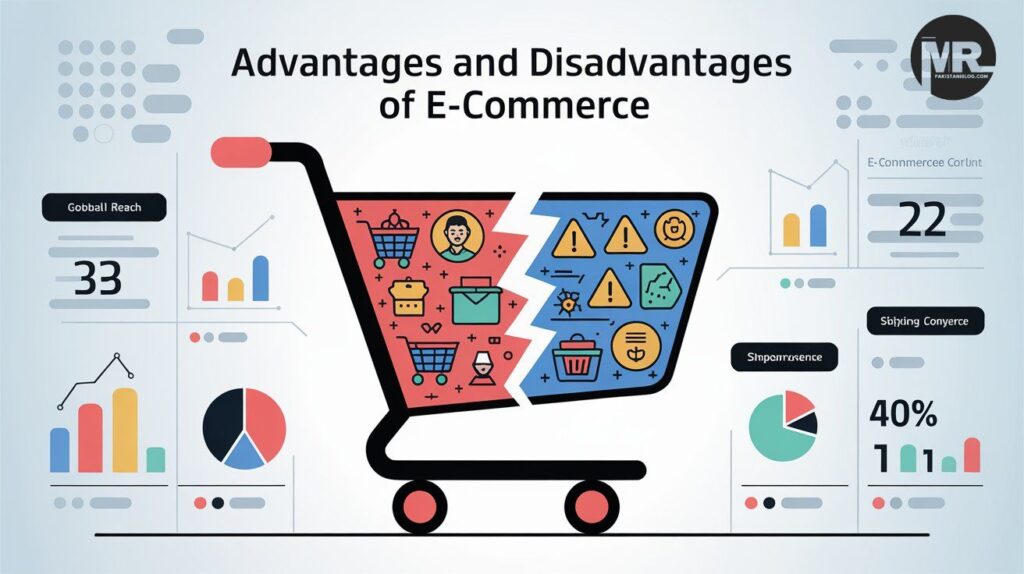
E-commerce offers several advantages:
- Convenience: Shop anytime, anywhere.
- Wide Selection: Access to a vast range of products.
- Price Comparison: Easily compare prices across different retailers.
However, there are also challenges:
- Security Concerns: Risks associated with online transactions.
- Shipping Delays: Potential delays in online order fulfillment.
- Customer Trust: Building trust without face-to-face interaction.
Weighing these pros and cons is crucial for businesses considering entering the e-commerce space.
Starting an E-commerce Business
Launching an e-commerce business involves several steps:
- Choose a Niche: Identify a specific market segment to target.
- Select a Platform: Choose an e-commerce platform that suits your needs.
- Set Up Payment Systems: Integrate secure online payment systems.
- Develop a Website: Create a user-friendly website with a clear product catalog.
- Market Your Store: Utilize digital marketing strategies to attract customers.
Each step requires careful planning and execution to ensure success in the competitive online marketplace.
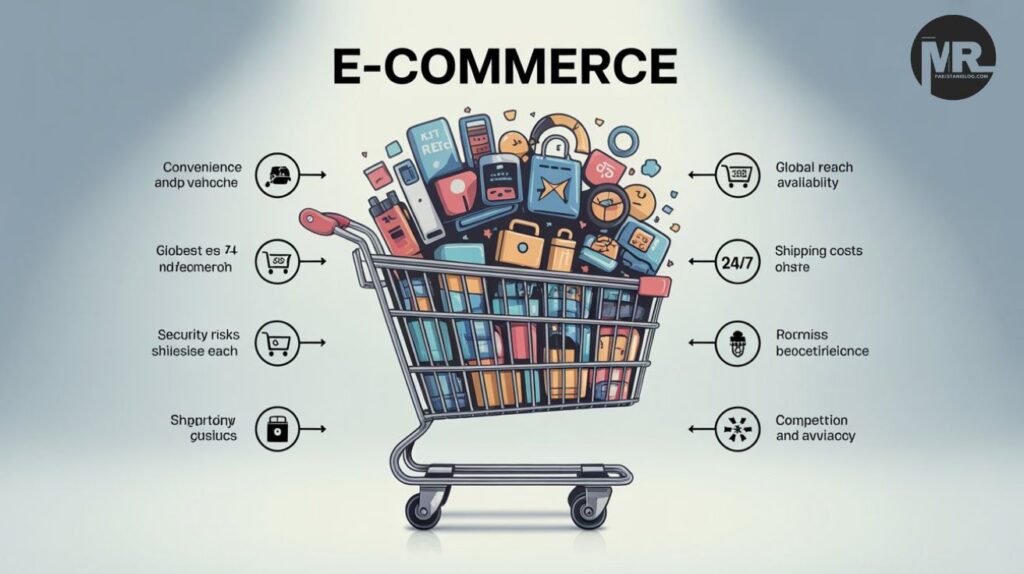
E-commerce vs. E-Business
While often used interchangeably, e-commerce and e-business differ. E-commerce focuses specifically on buying and selling products online, whereas e-business encompasses all aspects of operating a business online, including internal processes and customer interactions. Understanding this distinction helps businesses define their online strategies more effectively.
Future of E-commerce and Industry Trends
The future of e-commerce is shaped by several emerging trends:
- Artificial Intelligence: Enhancing customer experiences through personalized recommendations.
- Augmented Reality: Allowing customers to visualize products in real-life settings.
- Voice Commerce: Enabling shopping through voice-activated devices.
- Sustainability: Growing demand for eco-friendly products and practices.
Staying abreast of these trends allows businesses to adapt and remain competitive in the evolving e-commerce landscape.
In conclusion, e-commerce has transformed the retail industry, offering businesses new opportunities and challenges. By understanding its workings, models, and technologies, aspiring entrepreneurs can navigate the online business world effectively. Whether you’re starting a new venture or expanding an existing one, embracing e-commerce is essential for success in today’s digital economy.
Meta Description :-
Discover what e-commerce is, how it works, and learn step-by-step how to start your own successful online business today.

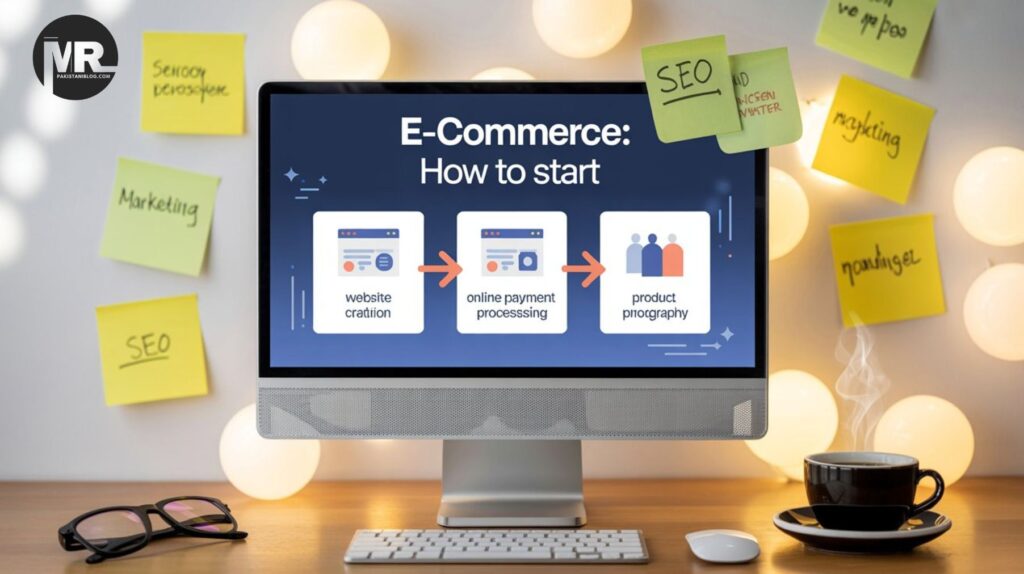


Interesting insights into how different models cater to market dynamics and customer needs. It’s crucial for businesses to understand these nuances to align their strategies effectively. The idea of technologies working together to enhance the shopping experience is compelling. However, the mention of challenges piques my curiosity—what specific obstacles are businesses facing? I’d love to hear more about how companies are overcoming these hurdles. Do you think these challenges vary significantly across industries? This makes me wonder: are there any case studies or examples that highlight successful implementations? What’s your take on balancing innovation with these potential challenges?